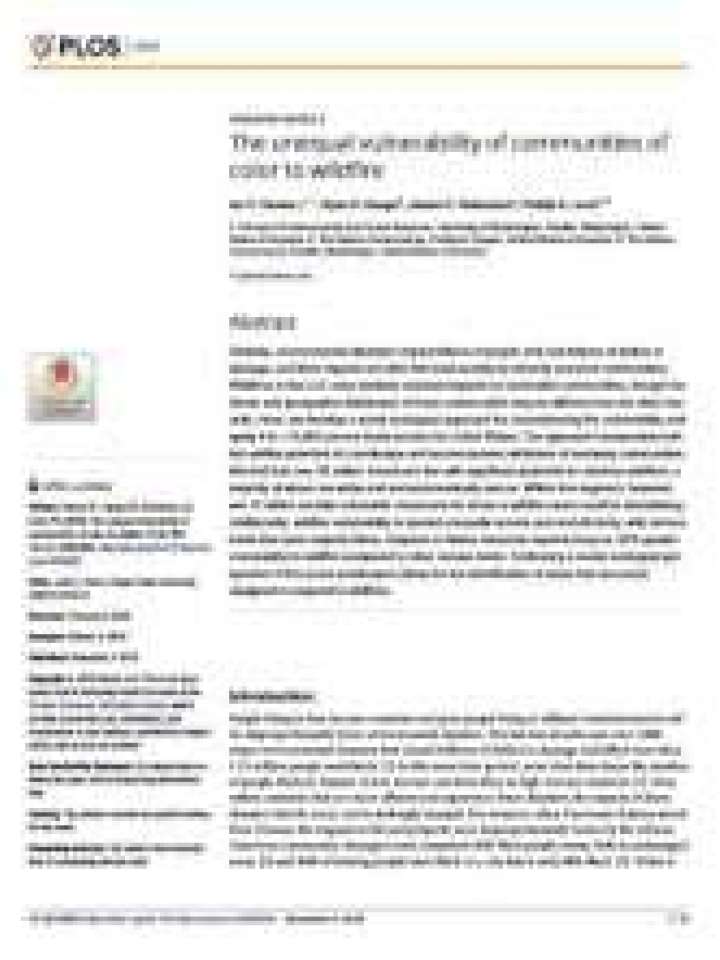The unequal vulnerability of communities of color to wildfire
Globally, environmental disasters impact billions of people and cost trillions of dollars in damage, and their impacts are often felt most acutely by minority and poor communities. Wildfires in the U.S. have similarly outsized impacts on vulnerable communities, though the ethnic and geographic distribution of those communities may be different than for other hazards.
This study develops a social-ecological approach for characterizing fire vulnerability and apply it to >70,000 census tracts across the United States. The approach incorporates both the wildfire potential of a landscape and socioeconomic attributes of overlying communities. The study finds that over 29 million Americans live with significant potential for extreme wildfires, a majority of whom are white and socioeconomically secure. Within this segment, however, are 12 million socially vulnerable Americans for whom a wildfire event could be devastating. Additionally, wildfire vulnerability is spread unequally across race and ethnicity, with census tracts that were majority Black, Hispanic or Native American experiencing ca. 50% greater vulnerability to wildfire compared to other census tracts. Embracing a social-ecological perspective of fire-prone landscapes allows for the identification of areas that are poorly equipped to respond to wildfires.
Explore further
